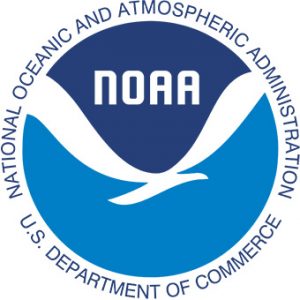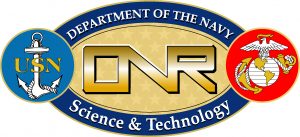Nereid Under Ice
One of the main pieces of research equipment on the cruise is the hybrid remotely operated vehicle (HROV) Nereid Under Ice (NUI). NUI is a new vehicle that that has already been tested in open water and under Arctic sea ice and in both its remotely operated and autonomous modes.
As an autonomous underwater vehicle (AUV), NUI can operate independently, following a pre-programmed mission to map large areas of the seafloor or test the physical, chemical, and biological properties of a large volume of ocean. When NUI locates something of interest, it can be programmed to narrow its search pattern, or the vehicle’s support team can bring it back to the ship and convert it into a remotely operated vehicle (ROV) tethered to the ship via a hair-thin, fiber-optic cable. Through this tether, NUI can transmit high-definition, real-time video and data back to the ship while also being directed by a pilot to collect samples or conduct experiments with a manipulator arm.
The approximately $3 million vehicle, which was developed with funding from the National Science Foundation and WHOI, was tested in July 2014 on a scientific expedition aboard the Alfred Wegener Institute’s ice-breaker Polarstern, which has the ability to access thick ice and which is the ship carrying it again on this cruise.
A key piece of technology behind NUI’s unique capabilities is the fiber-optic tether that gives the vehicle and ship a remarkable degree of flexibility while the NUI is operating in ROV mode. The tether was originally designed to help HROV Nereus reach the deepest parts of the ocean. In NUI’s case, the fiber optic tether allows the vehicle to move laterally away from the ship as much as 20 kilometers (12 miles) to reach heavier ice cover or the calving front of a glacier while still remaining under direct human control. This also permits it to remain in place over a specific location on the seafloor while the ship moves with the sea ice on the surface. If the tether breaks or becomes entangled, NUI is designed to operate as a free-swimming, autonomous vehicle and return to the ship.
Over the past 30 years, the Arctic has warmed more than any other region on Earth. As sea ice continues to thin and melt, understanding the rapid changes going on in this sensitive part of the world and its ecosystems becomes even more crucial. In addition, ice-covered portions of Earth are an important test bed for tools and techniques that will eventually be used to explore ice-covered worlds elsewhere in the solar system for the first signs of extraterrestrial life.
During its trials off the Polarstern in 2014, the vehicle made four dives, to a maximum depth of 45 meters (150 feet) and explored the water and underside of sea ice up to 800 meters (one-half mile) away from the ship while completing 3.7 kilometers (2.3 miles) of track-line surveys. The dives provided scientists with optical, physical, chemical, biological and visual data, which will be the focus of continued study, particularly looking at the extent to which photosynthesis can occur in an ice-covered ocean and how that varies as melt-ponds form and the ice thins. NUI has since dived as deep as 925 meters (3,000 feet) and on this cruise is scheduled to go as deep as 600 meters (2,000 feet).
Technical Challenges
Sending an underwater vehicle to the seafloor is a complicated task in even the most ideal conditions. For this cruise, sea ice presents several technical challenges for the Nereid Under Ice (NUI) vehicle and for the team on board the icebreaker Polarstern.
First, the ship has to reach the survey location just 200 miles from the North Pole as the Arctic night returns and the sea ice begins to rebound from its minimum extent in mid-September. The Polarstern can ram through ice up to 3 meters (9.8 feet) thick, but once it has opened a lead and deployed the vehicle, the ship will be at the mercy of the constantly moving pack ice while the vehicle is in the water. Fortunately NUI’s fiber lightweight fiber optic tether, which permits the vehicle to travel as much as 20 kilometers (12 miles) away from its surface vessel, also allows it to survey a single location on the seafloor while the ship moves with the ice.
The ice presents a more formidable challenge if NUI runs into trouble while it is underwater. A standard remotely operated vehicle (ROV) or autonomous underwater vehicle (AUV) can be programmed to surface if a problem occurs, but NUI can’t simply surface at any time because it could become trapped under the ice without any way for the team on the ship to find it.
To address this, the team operating NUI has done two things. First it will establish both long baseline and ultra-short baseline communication and navigation networks that permit the vehicle operators to precisely locate NUI at all times even as the ship is moving. Second, they will program NUI to go into a power-conserving sleep mode if it encounters a problem. This will give the ship time to reposition for recovery, or to delay recovery if ice conditions worsen.
With a high-bandwidth data link to NUI, technicians on the ship can also diagnose and possibly correct any problem the vehicle might be experiencing. The key, however, is to conserve the vehicle’s battery power because, unlike a conventional ROV, NUI does not receive power from the surface while it is in the water.





